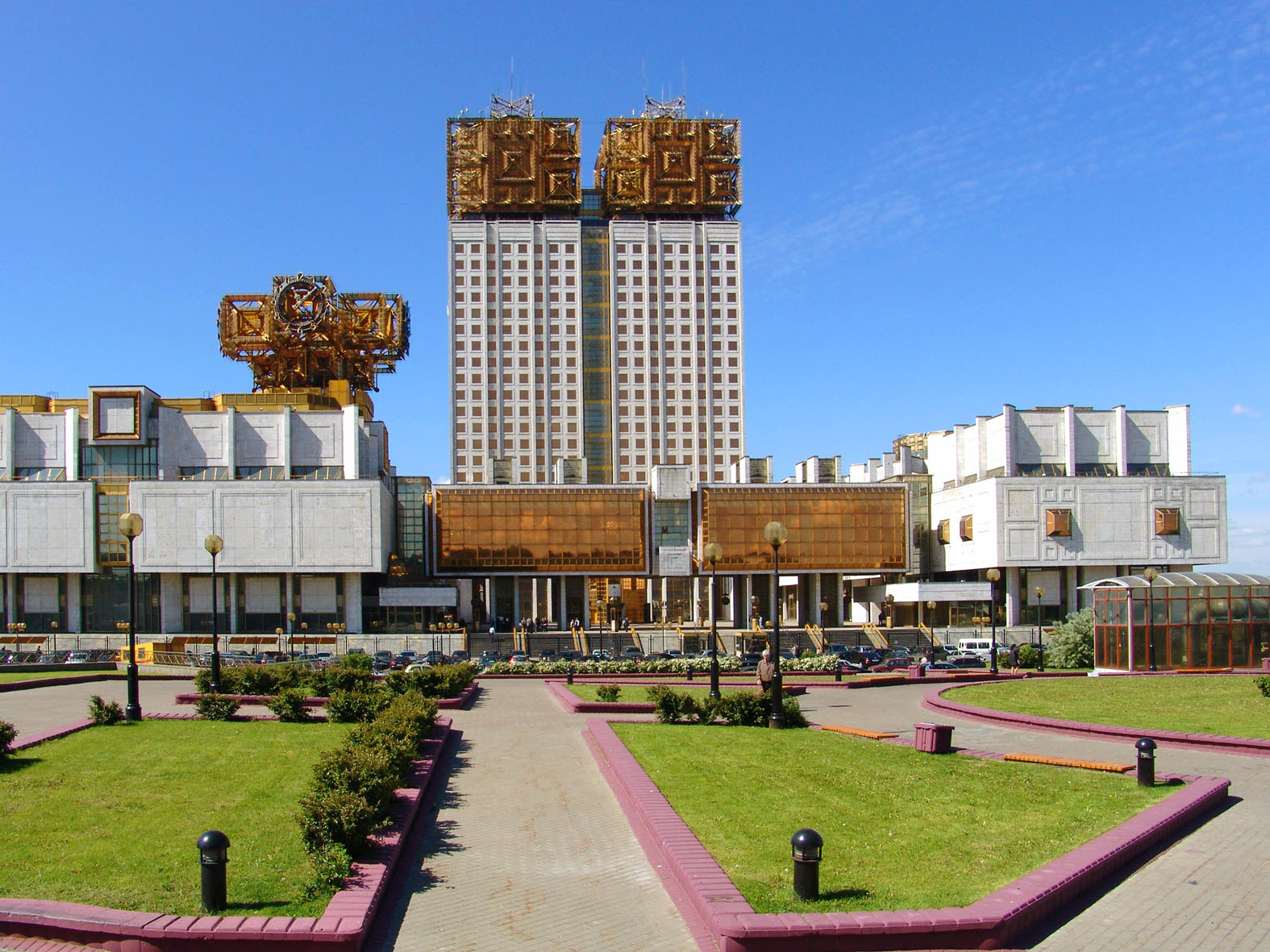Russian Academy of Sciences
 The Russian Academy of Sciences (RAS; ''Rossíyskaya akadémiya naúk'') consists of the national academy of Russia; a network of scientific research institutes from across the Russian Federation; and additional scientific and social units such as libraries, publishing units, and hospitals.
The Russian Academy of Sciences (RAS; ''Rossíyskaya akadémiya naúk'') consists of the national academy of Russia; a network of scientific research institutes from across the Russian Federation; and additional scientific and social units such as libraries, publishing units, and hospitals.Peter the Great established the academy (then the St. Petersburg Academy of Sciences) in 1724 with guidance from Gottfried Leibniz. From its establishment, the academy benefitted from a slate of foreign scholars as professors; the academy then gained its first clear set of goals from the 1747 Charter. The academy functioned as a university and research center throughout the mid-18th century until the university was dissolved, leaving research as the main pillar of the institution. The rest of the 18th century continuing on through the 19th century consisted of many published academic works from Academy scholars and a few Academy name changes, ending as The Imperial Saint Petersburg Academy of Sciences right before the Soviet period.
Now headquartered in Moscow, the academy (RAS) is a non-profit organization established in the form of a federal state budgetary institution chartered by the Government of Russia. In 2013, the Russian government restructured RAS, assigning control of its property and research institutes to a new government agency headed by Mikhail Kotyukov.
, the academy included 1,008 institutions and other units; in total about 125,000 people were employed of whom 47,000 were scientific researchers. Provided by Wikipedia
-
1by Kudryashov, N.M., Skublov, S.G., Galankina, O.L., Udoratina, O.V., Voloshin, A.V.Contributors: “...GI KSC RAS...”
Published in Geochemistry (2020)
Get access
Get access
Get access
Article in Journal/Newspaper -
2Contributors: “...The work was carried out within the framework of the GI KSC RAS Project AAAAA 19-119100290145-3...”
Get access
Get access
Article in Journal/Newspaper